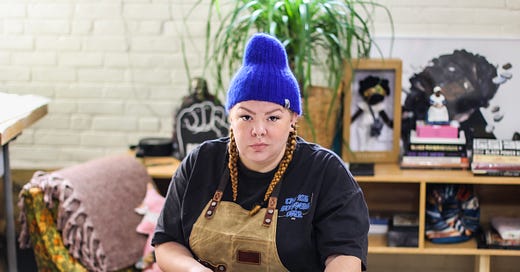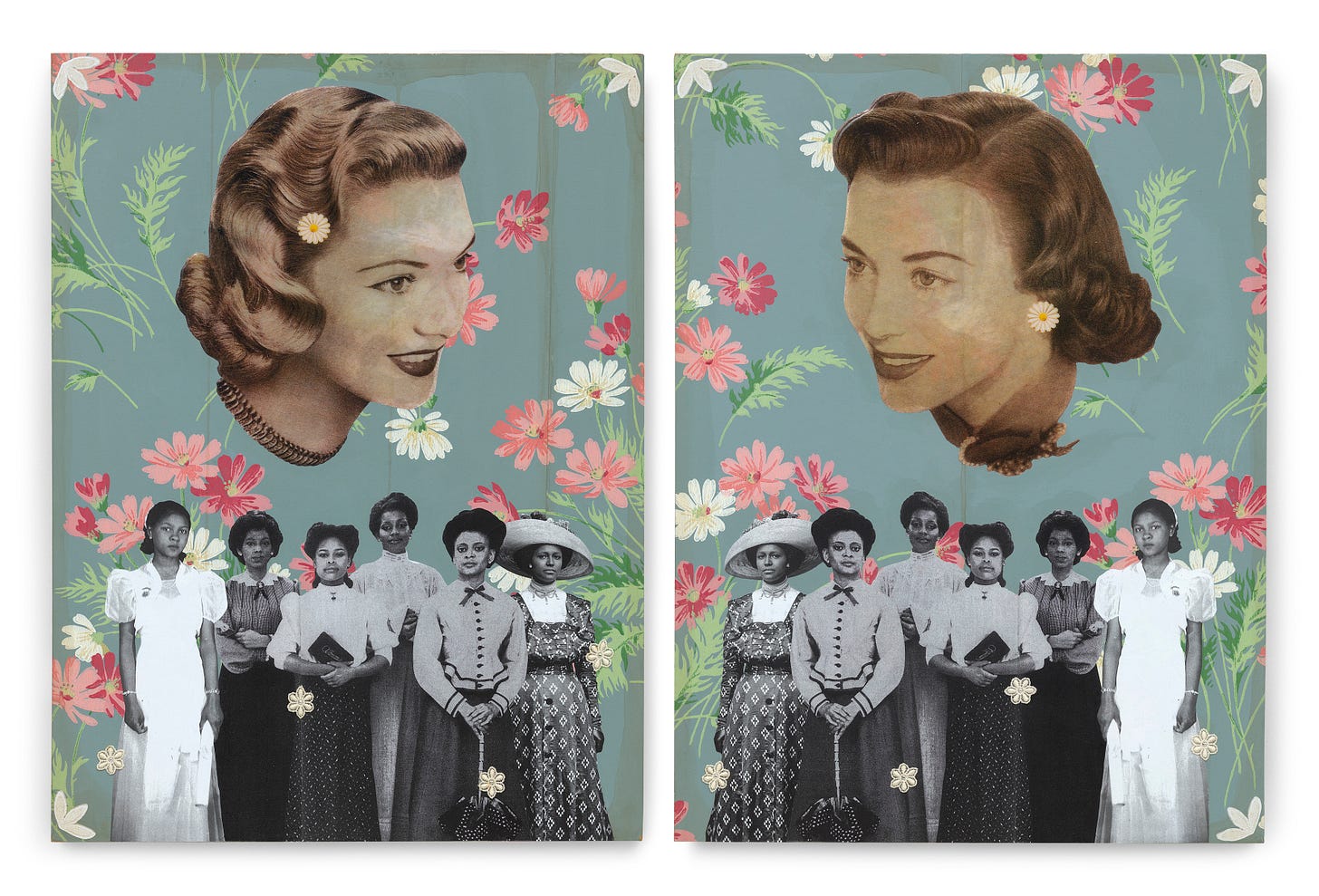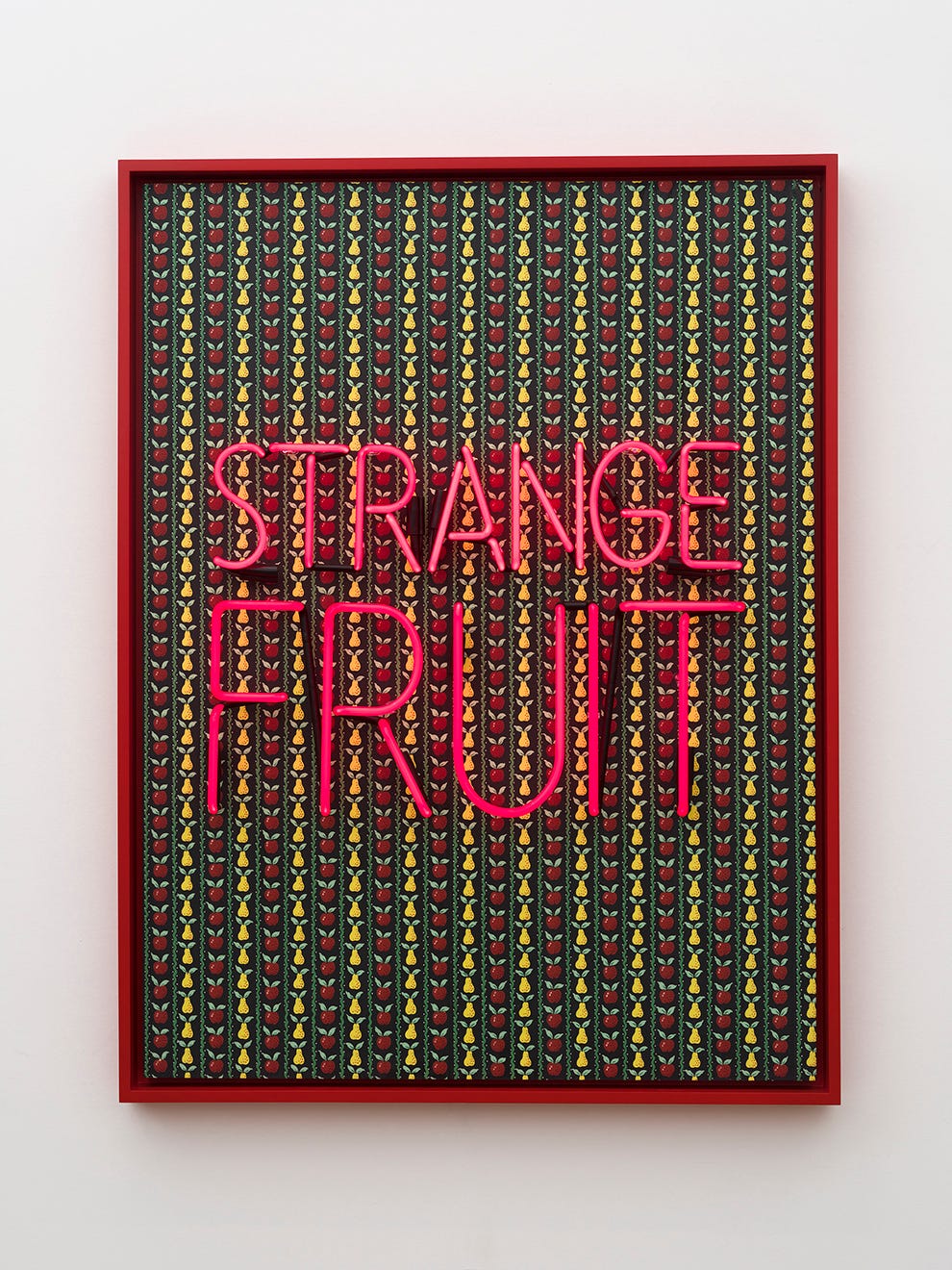Genevieve Gaignard: “‘Passing’ is the way others place the pass on me”
The artist on the nuances of race, our layered experiences and her work helping others
Hi, welcome back to Mixed Messages! This week I’m speaking to artist Genevieve Gaignard, who is of mixed Black and white heritage. Genevieve uses self-portraiture, collage and installation to comment on the intricacies of race, inviting audiences to interrogate their place in the world and wider systems of racism. The results are provocative and beautiful, and I was excited to hear more of her story. Read it below.
What’s your racial background?
My mom is white and my dad is Black. My mom grew up in the woods of Maine and my dad grew up in the South. He was raised in the seventh ward, which is known as the Black Creole section of New Orleans.
To identify what that mix is specifically would be hard because America is such a melting pot.
Biracial is a term I use. Mixed-race is always something I was called but never how I referred to myself.
Your work looks at ‘passing’ or being white-presenting – what has your experience been like with other people’s perspectives of you versus how you felt yourself?
The language that I had before I started making work about my identity has shifted. In my past, I gravitated to the word ‘passing,’ but historically the term ‘passing’ was used in reference to folks that slide under the radar, to gain access that would otherwise be denied. The motivation for passing was never cut and dry, but it always came down to white acceptance and opportunity. This history of people living double lives, passing as white either as a tool of convenience or denial, always felt like a way to survive.
Doing this work is very layered. For me now, the way I like to be in dialogue about ‘passing’ is the way others place the pass on me. It often feels like others put me in a box that feels safe or right for them.
Like you said earlier, we are so used to lumping people into boxes to form quick judgements. There is a safe feeling that comes from categorising someone. That easy categorisation doesn’t work for a lot of us and I challenge this truth throughout my work. The nuances of being biracial and/ or ‘othered’ will always inform my work.
And Whitey's On The Moon, 2022. Mixed media collage on panel. 18 x 24 x 1 1/2 in. Photographed by Todd-White Art Photography.
I’ve spoken to previous guests about the expectation for you to tick certain cultural boxes, like enjoying a certain type of music. Have you ever felt like people have had expectations of you?
My culture… I mean, what is it? I’m constantly on this wave. Sometimes the ride is smooth and other times it knocks you off your surfboard. I grew up in a predominantly white town and wasn’t exposed to the wide range of Black cultural experiences that came with growing up around Black kids.
Not that I don’t listen to ‘Black’ music or music by varied artists, but there are specific genres that just didn’t come my way. It’s all about exposure. That could be the case for some white kids who grew up listening to music by predominantly Black artists. There will always be a stereotype people expect others to live by, but you will never know someone’s experience or cultural interests just by placing them in a box.
Is that culture something you made a conscious effort to explore?
More so now. I am curious about things that I might’ve missed out on. Or maybe I wasn’t supposed to see them ‘til now and they hit differently because I am more self-aware. I can process whether something resonates with me or not. Oftentimes, what resonates files into my memory bank and it'll come out in a work in some unique way that I might not have thought of before.
I often think that the work I am currently making is for the younger me – it never felt like anyone represented her. If my work is getting through to a young person and they feel seen, then I think I’ve done my job.
Genevieve Gaignard. And Still We Bloom, 2022. Mixed Media Collage on Panel. 37.25 x 25.25 x 2.25 inches
Growing up, did you see anyone that you felt represented you?
I remember getting excited to know that there was a Mariah Carey or an Alicia Keys. There’s always been a fascination of wanting to see people’s parents and wonder how it connects you, but it doesn’t really answer the question. White supremacy programs society to believe that they must fit in this top tier box of success, which is equated with whiteness. Everything outside of a white standard feels foreign and ‘others’ people in a negative way.
Did you speak about being mixed with your family growing up?
In some aspects, yes. I said in another interview that I didn’t think I knew I was Black, as I identify now. I remember being bullied at school, and the Oreo comments. Our neighbour said ‘the monkey kids are out,’ which wasn’t an everyday occurrence but is burned into my brain.
In high school, I remember a girl saying to me ‘so you’re mulatto,’ and I didn’t know what that meant. I had never heard that. I went home and yelled at my mom, ‘you didn’t tell me I was mulatto!’ I just remember feeling like she was hiding what I was from me, in not knowing this term. But obviously she wouldn’t call me that – I shouldn’t say obviously, some people still use that term.
Genevieve Gaignard, Strange Fruit in Neon, 2022. Neon, vintage wallpaper on panel. 48 x 36 inches
In the UK I’ve seen the language around mixedness develop – is it changing in America?
We haven’t come as far as we’d like to think. My work involves rummaging through vintage and antique magazines and materials that reiterate the old ways, so I’m less hip to what you’re using.
I remember starting to make work about mixed-race when I was in community college. As a starting point I painted my face half white and half black. When I went to graduate school, I noticed all these students of colour, specifically Black students, making work about their Black identity, and I was in awe. It was like a light bulb went off and I needed to unpack what my Black identity story reveals.
What’s one of the most positive things about being mixed for you?
I feel like I know how people mostly view me, but they don’t know that I'm having all of these other realities. One of the positive things is the ability to see beyond that box. Some people need boxes, they can be a comforting thing, this is what we’re taught. I prefer to think of the box as having swinging doors, one you can get out of and others can come into.
How do you want the conversation around mixedness to develop?
I just want folks to be more open minded, to not project or reflect their baggage onto others. People are so quick to think about themselves when trying to relate to others and interactions become about them as opposed to that person in front of them. This lack of awareness is where I feel we get hung up.
Can you sum up your mixed experience in a word?
Evolving. I could say beautiful. It’s layered. I wouldn’t have it any other way.
Next week I’ll be talking to actress Yasmin Wilde. Subscribe to get Mixed Messages in your inbox on Monday.
Enjoy Mixed Messages? Support me on Ko-Fi! Your donations, which can start from £3, help me pay for the transcription software needed to keep this newsletter weekly, as well as special treats for subscribers.
Mixed Messages is a weekly exploration of the mixed-race experience, from me, Isabella Silvers. My mom is Punjabi (by way of East Africa) and my dad is white British, but finding my place between these two cultures hasn’t always been easy. That’s why I started Mixed Messages, where each week I’ll speak to a prominent mixed voice to delve into what it really feels like to be mixed.









